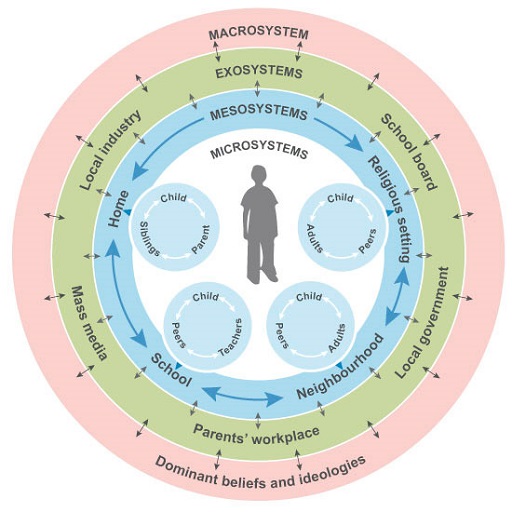1 Supporting unique transitions
The diagram above, conceived by eminent psychologist Urie Bronfenbrenner in 1979, represents a way of understanding children’s development and experiences. It illustrates the complexity and range of transitions that a child might encounter on a daily basis as they move between different situations or environments. The model also highlights the value of listening to different people’s perspectives in order to support the child as they encounter such transitions. For example:
- A child operates in a number of microsystems such as home, neighbourhood and nursery, in which they have different roles and relationships. Children can develop shared understandings about new microsystems, in dialogue with others who listen and respond.
- Parts of a child’s microsystems interact within the wider mesosystem. Parents or carers and nursery workers sharing information by talking or passing on written documentation is an example of such interaction. Such sharing of information and dialogue can help children to experience a smooth transition as they move between microsystems.
- The exosystem consists of environments in which the child has no direct involvement but which might influence their experiences. A change in a parent’s working hours, for example, might require a child to move into different childcare settings. Listening to children and their carers can highlight the impact of such changes.
- The macrosystem refers to the wider cultural values, laws and customs that filter through the other layers to impact on the child. Children who move between different countries, for example refugee children, may experience such significant cultural shifts and transitions.

